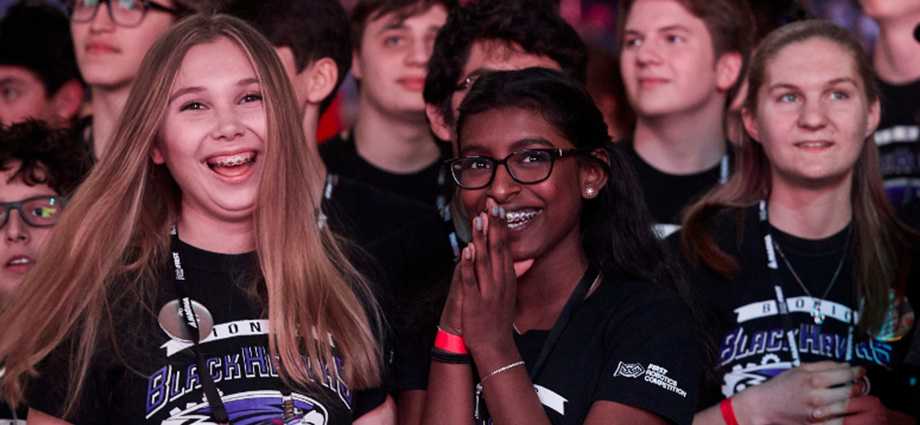STEM Gender Equity: Supporting Girls in STEM Without Diminishing Boys
A Collaborative Journey

Over the years, girls and women have made commendable strides in gaining representation in the areas of science, technology, engineering, and mathematics (STEM), but we must also recognize that despite these advancements, there is still a gravely low proportion of women graduating and pursuing STEM careers in the United States. Eliminating the gender gap in STEM would increase employment and productivity of women in science and reduce occupational segregation – which would drive more diverse thought, innovation and creativity across STEM fields.
I would like to highlight that although I will be speaking of STEM gender equity in terms of “male” and “female,” STEM gender equity extends beyond the male/female dichotomy. LGBTQ+ rights and women rights are intertwined. This intersectionality spans many different sexualities and identities.
Globally, women are the most under-represented in the sciences. To clarify, girls and young women show an interest in STEM, they are actively and enthusiastically participating in STEM programming and activities, and their STEM test scores are comparable to their male counterparts. Through years of research, it has been revealed that the STEM pipeline for girls and young women becomes clogged after high school.
Statistics show that the gap between boys and girls as it relates to progression in STEM becomes drastically wider in the transition from high school to majoring in STEM subjects in college and to ultimately embarking on a STEM career with advancement. Why is this happening? There is no clear, concise, easy answer to this question, but there may be some societal factors that play a role in the gender equity gap in STEM.
What is gender equity in STEM?
Gender equity in STEM is managing and allocating resources, programs, educational opportunities, and decision-making fairly to both males and females. Gender equity in STEM ensures that girls and women are provided with opportunities that meet their needs, interests, and experiences.
To achieve this goal, intentionality is important. Some activities, initiatives, and programs for girls may be the same as those offered to boys and men, some may be altered, and some may be vastly different. No one group of people is the same and, in an effort to support and promote diversity, targeted efforts and initiatives are merely one way to address and overcome known disadvantages and stereotypes. Targeted interventions are needed to progressively travel on the STEM gender equity journey with the overall goal of creating a level playing field for all students.
How can we support girls in STEM, without diminishing boys?
- Support efforts to engage girls in STEM – which does not mean opposing boys in STEM
There has been a constant rise in initiatives and programs that address and solve some of the grave statistics published about the STEM gender gap, progression of women in STEM careers, and sustainability of the participation of girls and women in STEM. These efforts recognize the larger issues and address the challenges that traditional efforts may dismiss. This does not mean that these programs are against the participation of boys and men in STEM.
- Be intentional and inclusive
To create a culture of inclusion, in addition to targeted STEM opportunities, it is important to clarify that gender-specific initiatives are inclusionary and not exclusionary. Positive efforts that target specific groups are important because they take into consideration years of socialization and historic traditions that have created barriers. The STEM gender gap is not just a “girl/women” problem; it is a societal problem and therefore requires the work of the collective.
- Work together: Teamwork makes the dream possible
STEM gender equity requires an examination of practices and policies that may hinder participation of girls and women in STEM. This requires teamwork and a collaborative lens. Although there may be targeted efforts, progression includes input and views from everyone. To successfully create new practices and policies that address the overall problems and barriers that girls and women face in STEM, the participation of boys and men is critical.
As a continued effort in its dedication to equity, diversity, and inclusion initiatives, FIRST has launched a new initiative, “Elevating Girls & Young Women in STEM”, sponsored by Fidelity Charitable. It is a call to action to provide a space to further the conversation on equity action planning and creating change in STEM gender equity.
The new webpage highlights FIRST initiatives, provides resources and information, and will interactively participate with the FIRST community by providing a platform for equity, diversity, and inclusion in STEM. FIRST, driven by strategies developed from the Equity, Diversity, & Inclusion (ED&I) team, will continue to address and work toward eliminating STEM barriers. The page is a resource for everyone.
Dr. Domonique Bulls is the inaugural Designing STEM Equity Fellow for FIRST. The fellowship is 18 months with the goal of designing solutions that create equity in STEM for underrepresented, underserved, and vulnerable youth. The FIRST Fellowship for Designing STEM Equity program includes exploration of equity literature, anti-deficit framing, collective impact, and human-centered design. Dr. Bulls has a Ph.D. in Science Education from the University of North Carolina at Chapel Hill and researches informal science education.
Thank you to our Equity, Diversity, and Inclusion Sponsors
FIRST Equity, Diversity and Inclusion sponsors include Apple, Arconic Foundation, Qualcomm Incorporated, Bosch, Caterpillar, Cisco, Cognizant, The Dow Chemical Company, Fidelity Charitable, GM, GitHub, John Deere, Verizon, and individual donors, among others.
If you have an inspiring story or piece of wisdom that you’ve picked up through your experiences in the FIRST community, please reach out to us at inspire@firstinspires.org and inquire about becoming a guest contributor for Inspire.






